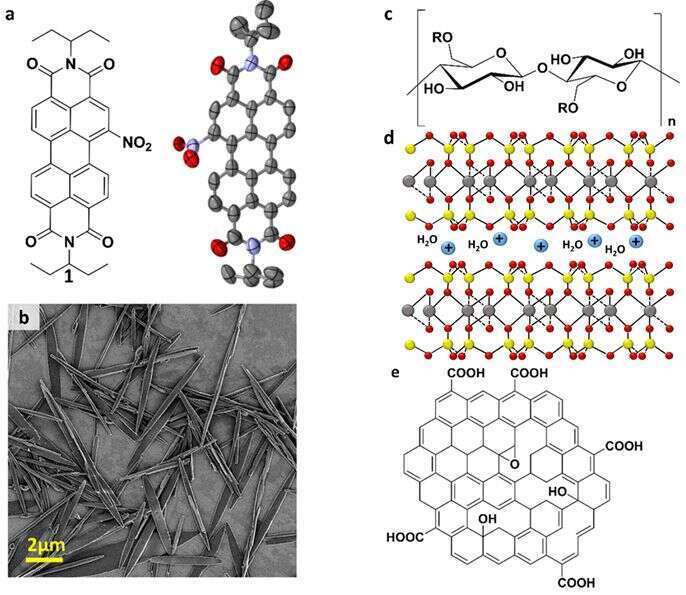
Self-Assembled Hybrid Materials Based on Organic Nanocrystals
We demonstrate a facile solution-based fabrication of functional and easily recyclable materials that are built from small molecules (“molecular plastics”). Centimeter-size free-standing hybrid films are assembled from organic nanocrystals (ONCs) that are based on common organic dyes (perylene diimides, PDIs). The pristine organic nanostructured films exhibit good mechanical stability, and thermal robustness superior to most plastics, retaining the crystalline microstructure and macroscopic shape upon heating up to 250−300 °C. The ONCs can also mediate the exfoliation of different types of carbon nanotubes (CNTs) in aqueous and organic solution thus giving access to novel conductive dyes and a straightforward access to CNTs based buckypapers. In addition, our molecular plastics can be made robust and their (nano)structure can be tuned via modular construction. We employed binary composites of our PDIs based ONCs, with graphene oxide (GO), bentonite nanoclay (NC), or hydroxyethyl cellulose (HEC), that both reinforce and enable tailoring the properties of the formed membranes. Hybrids 1/HEC and 1/NC are capable of ultrafiltration, and 1/NC removes heavy metals from water with high efficiency. Hybrid 1/GO shows mechanical properties akin to covalent materials with just 2−10% (by weight) of GO. Furthermore, Hybrid 1/GO was used as a membrane for immobilizing β-galactosidase that had demonstrated long and stable biocatalytic activity. In summary, molecular plastics may represent a cost-efficient and sustainable alternative to conventional covalent materials.

Figure 1. (a) Molecular structure of 1 and its ORTEP representation (derived from a single-crystal X-ray analysis), with thermal ellipsoids at 50% probability. Hydrogen atoms are omitted for clarity. (b) SEM image of ONCs of 1. (c) Hydroxyethyl cellulose structure (R = ethyl). (d) Structure of nanosheets of bentonite clay. The counter cations are marked in blue, Si in yellow, Al in gray, O in red. (e) Representative GO sheet structure.
References
[1] A. Niazov-Elkan, X. Sui, I. Kaplan-Ashiri, L. J. W. Shimon, G. Leitus, E. Cohen, H. Weissman, H. D. Wagner, B. Rybtchinski, ACS Nano 13 (2019), 11097–11106.
Powered by Eventact EMS